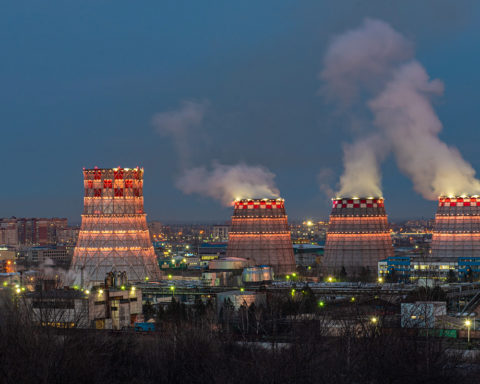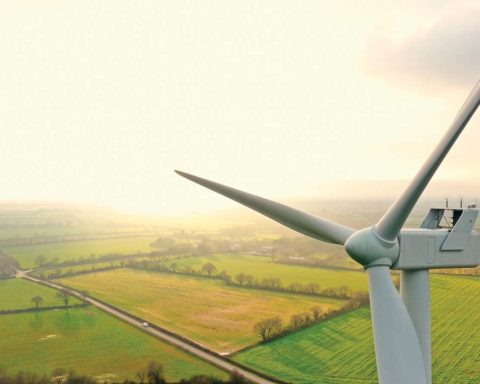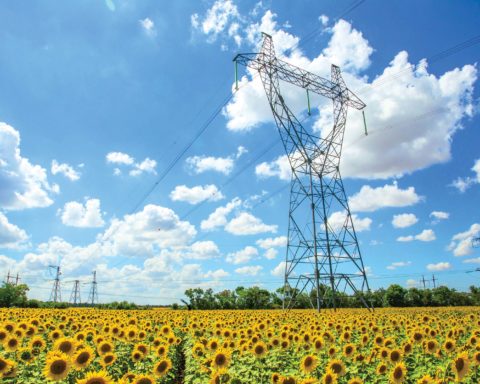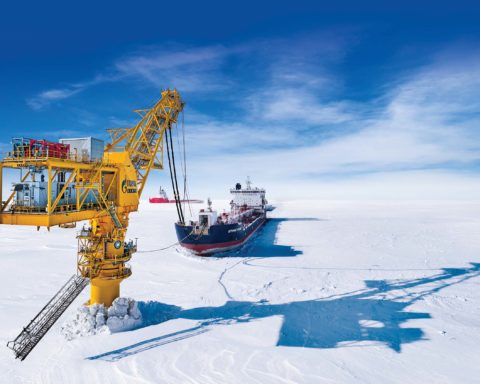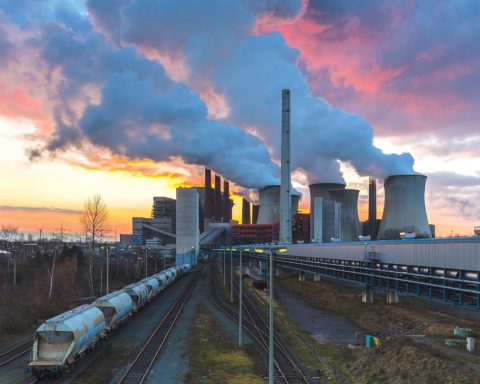Vitaly BUSHUEV
Director General with Institute for Energy Strategy, President of the Laboratory «Energy Initiative», professor, Doctor of Engineering
e-mail: vital@df.ru
Nikolay NOVIKOV
Doctor of Engineering, MPEI, Deputy scientific adviser «R&D Center at FGC of UES»
e-mail: universe@mpei.ac.ru
The article analyzes the need for and place of application of energy storage systems. The main types of energy storage systems are considered in detail and the possibilities of localizing their production on the territory of Russia are studied. In addition, the task was set on the need to develop a center for testing and certification of energy storage devices.
Key words: еnergy storage systems, energy system, energy storage, types of storage.
Prospects of the Electric Energy Storage Technology
Currently, the development of electric power sector is influenced by several technological trends. First, the process of infrastructure digitalization goes on, i.e. deployment of smart metering systems or energy flows, distributed automation systems, systems for monitoring of equipment operational state and power supply quality, building-up digital models to achieve optimum control of power system functioning and development.
Second, deep decentralization o energy production takes place, i.e. large-scale involvement of distributed energy resources into the power system. (including renewable energy sources), optimum combination of main, distributed and stand-alone generation, the use of potential of multifunctional generating facilities (for example, co-generating and tri-generating plants).
Third, migration to smart management and engineering takes place, i.e. implementation of smart cyber-physical devices, the use of methods and tools of artificial intelligence to automatically manage production processes and commercial relations, as well as to automatically engineer, adjust, recover management systems.
The newly forming technological model of electric power industry will be characterized by increased complexity of power systems, considerable share of distributed generation, new type of players – active consumers who combine functions of energy consumption and production, increased requirements to accessibility, quality, and reliability of power supply.
A technological method to limit this complexity is massive application of energy storage systems that breaks the basic paradigm of power system building-up: simultaneous and synchronous energy production and consumption.
As a result, electric energy becomes a normal article of merchandise. In addition, the development of energy storage systems will lead to increase in bidirectional electric energy flows, while now the flows are mainly distributed in a unidirectional manner over the following hierarchy path: “backbone networks – distribution networks – consumer”. In general, electric energy storage units are one of key elements in the new paradigm of “smart” power industry.
Potential areas of energy storage application include: smoothing the irregularity of power generation and consumption (including RES-generation), voltage and frequency control, provision of standby capacity, emergency power supply to prevent development of emergency situations in the system (with power system islanding) and to recover the power system after such emergencies. A particular importance of energy storage units lies in the fact that they can perform the above listed functions simultaneously.

Source: amp.energybase.ru
The new technological model provides the Russian power industry with a unique opportunity to improve its effectiveness dramatically and to support competitiveness of power-intensive industry, which will continue to make a major contribution to the economy within the next 15 years even in the case of successful shifts towards refusal of raw-materials model of development. It will yield significant improvement of capacity factor of the existing generation in power systems, reduce the need for construction of new capacities, improve operating efficiency of energy producers and infrastructure organizations. In general, this will allow to hold electric energy price increases to a minimum within the new investment cycle in the electric power sector, which will be started in Russia in the first half of the 20-ies.
However, modern regulatory documents in the field of electric power sector do not consider to a significant extent the peculiarities of energy storage system functioning and the opportunities created by them. It is built up mainly due to the need to ensure continuity and synchronism of electric energy production and consumption, passive role of the end user, «procurement» model of electric energy sales. Moreover, the applicable regulations provide strict role separation in the industry between production, transmission, sales, consumption of electric energy.
Existing systems for electric energy storage
The electric power sector in Russia has changed quantitatively and qualitatively over the last years. Operating modes of power systems became more severe. Operation with minimum power margin, increase in number of high-performance but low-cycling power units, arrearage of grid construction and increase in number of weak interconnections complicated significantly the problems of static and dynamic stability, survivability of power systems, reliability and quality of electric power supply despite the successes made in the field of automated systems of dispatching management, automatic control systems and automatic protection.
Currently, the Unified Energy System of Russia is still running with heavy operation modes, with quite complicated fuel problem. Management of power systems becomes more difficult due to big share of low-cycling large power units o thermal power plants. Strict requirements imposed on the electric power industry dictate its radical restructuring – from the principles of its structuring and management to its hardware. The need to reduce non-productive fuel consumption imposes strong requirements to cost-effectiveness of operation modes.
Development of energy storage systems will result in greater bidirectional flows, while now they are distributed in a unidirectional manner
Currently, formation of large electric power systems is characterized by increased share of units working on the basis of daily load schedules. This is promoted to some extent by the existing practice of generating capacity upgrade when cycling units with a capacity of 50–200 MW are consistently dismantled on power plants. As a result, under loads equal to 50% of rated load fuel consumption grows by 16–26 g/kW h. Statistical analysis of performance of united power systems shows that along with the improvement of power supply reliability and reduced expenses for redundancy, no daily load schedule compression is observed. Also, objective consideration of trends in development of fuel and energy complex indicates that in the nearest 30-40 years thermal power plants will continue to be major electric energy producers, fuel cost will continue to grow, and intersystem connections will continue to be classified as
“weak” for many years ahead. Consequently the introducing into the electric power system the energy storage units that allow separating in time the processes of energy production and consumption (provided that these units have high efficiency) is of great importance for the national economy. Energy storage will allow increase in capacity and operation time of basic electric power plants thus improving performance of large power units thanks to significantly reduced operating expenses, compress load schedules and compensate for peak load variations. In addition, energy storage units can substantially improve stability of large power plant while keeping the balance of power in the electric power system. Introducing energy storage into the power system as an independent structural unit is an objective necessity, and for the nearest years there are no an alternative solutions for powerful TPPs and NPPs with energy storage units. It can be expected, that more than 10% of all generated energy, before delivery to the consumer, will be passed through energy storage systems. At the current development phase of the Unified Energy System dynamic properties of power pools became so complex and system automation achieved such a high level of complexity that problems can arise in relation to stability, control of frequency and active power [1,2]. It is the complexity of dynamic properties of power pools and absence of holistic comprehension of the controllability problem have resulted in the situation when some scientific and research organizations and experts consider as unavoidable necessity that interconnection of subsystems can only be made via DC links to sectioning the power pools based on the channels of disturbance propagation that provide either complete separation of the system for disturbances, or intensive attenuation of disturbances as they are translating.
Transient processes in complex power pools are a mutually conditioned set of motions of local (in subsystems) and intersystem (exchange) character. The interactions result in the process of disturbance propagation and distribution, which is manifested in the situation that the motion initiated by the disturbance in one subsystem is consistently and gradually, through intermediate subsystems, translated over the power pool causing transient processes in regions far away from the point of disturbance. Disturbances acting on the UES can be classified by the frequency spectrum as high-frequency (with a period of less than 1 minute), low-frequency (with an oscillation period of up to 5 minutes) and infralow-frequency (with an oscillation period greater than 5 minutes). As a rule, high-frequency components of power fluctuations (so called “noises”of the system) have low amplitude, but can threat the stability of connection, especially weak one. Low-frequency power fluctuations have large amplitude and related to actual power exchanges.
Thus, the need arises to resolve the problem of control of disturbance propagation processes, to form a set of protection measures and system automation. Solution of the problem of disturbance localization by means of regulation and protection controls is dependent to a significant extent on the reliability indicators of lengthy power pools performance. For this purpose, it is reasonable to separate concepts of circuit reliability and mode reliability in the definition of electric power system functioning reliability. Circuit reliability is mainly connected with structure of the system. Mode reliability is a complex function of structure, dynamic and static parameters, range of modes being implemented, static parameters of disturbing impacts. Ensuring circuit reliability, i.e. building up a system with adequate level of redundancy for element failures, does not automatically result in a system with high level of mode reliability in the entire space of states. Mode reliability is determined by technological restrictions (including those related to stability), processes of disturbances propagation and development of emergency states.

Source: MOSENERGOPROJECT
Numerous system tests conducted in united power systems by Central Dispatch Administration of UES, VNIIE, NIIPT, Energosetproject, SibNIIE, VEI, NII Electromash allowed to detect a key common feature of transient phenomena in united power systems. The lower are spectrum frequencies of the motions under consideration, the more systematic is the nature of these motions. In other words, the low-frequency motions are defined by properties of the system in general rather than regional parameters of the area of disturbance [3].
The holistic approach to analysis of dynamic properties of power pools allows estimating efficiency of traditional control means (automatic excitation control, automatic speed control, automatic load frequency control), as well as determining the need to create conceptually new electric hardware packages — energy storages and flexible (controllable) alternative current transmission systems (FACTS)
The development of static compensators of reactive power opened new opportunities (STC and STATCOM), that, besides the ensuring required balance of reactive power and keeping required voltage level, with appropriate regulation laws can effectively damp both local and system fluctuations. For the purpose of system tests analysis, all disturbances are divided into three groups: disturbances related to deviation of load schedule from prognosed schedule; short-term, random variations not exceeding 2–5% of total power; large disturbances.
Quantitative characteristics of these disturbances are the input to determine allowed values of crossflows, as well as to impose requirements to system automation and to regulating plants including regulation range and required speed of change in power of plants.
When there is a need to engage large units to regulate variable part of the load schedule, fuel consumption is increased significantly.
Intensive implementation of energy storage systems (ESS) in power systems will allow overcoming the above-mentioned problem to some extent. Proposed energy storages can be ranked by power from several kW to thousands MW. Discharge time can also vary from hundredths of second to several days. Energy storage systems can be controlled locally or remotely, from control centers. They can be designed to quickly react to control commands. Energy storage units can consume and output active power, and being connected with components of power electronics they can process reactive power as well. Depending on needs of the power system, they can provide frequency and voltage regulation, time shift between consumption and generation, power regulation at the output of RES+ESS system, expand capabilities of the dispatch control. They can be designed for the needs of distributing and/or transmitting system, for single-purpose or multipurpose use, or for the purpose of control at the consumer side. Each energy storage technology is characterized by capital expenses required for its implementation, as well as operating expenses. Currently, some energy storage technologies are not cost-effective, and in future we need first of all to reduce capital expenses. Cost of various energy storage systems and benefits from their application are largely depend on the discharge power (MW) and energy capacity (MW h). Independent system operators (ISO), power production companies, vendors and providers of energy storage technologies should be active in forming the rules of the developing energy storage market, as well as the operational requirements in order to achieve maximum cost effectiveness of the use of energy storage units. Ideally markets and rates should be designed in such a way as to allow benefiting from the advantages of the energy storage systems without additional unnecessary expenses.
Managing the modes of power systems
The load of any node point of electric energy system is unambiguously determined by voltage and frequency in this point.
To ensure required values of frequency and voltage, correct planning of balances of active and reactive power at the point is required. The balance of active and reactive power consists of input part that includes available capacities of the power plant and energy storage units, and output part, that includes power of loads and capacities of energy storage units because they allow independent changing of active and reactive power. Solutions for interconnections of energy storage units with power system based on state-of-the-art power electronic components allow practically immediate changing of active and reactive power. Thus, distributed energy storage system is a basis to build up a coordinated system to localize disturbances in a node for active and reactive power of any spectrum. It is economically reasonable to limit the spectrum of active power changes of energy storages by 25-minute period of fluctuations. Fluctuations beyond 25 minutes are economically reasonable to be imposed on the generating sources, for example, on gas turbine power plants that will be cost-effectively and reliably working with such a spectrum of disturbances. Economic parameters of multifunctional fast-acting system to control the modes of power systems can be considerably improved by getting the energy consumers involved in the control.
Thus, grid energy storages with appropriate control system will allow ensuring quality of electric power in terms of its frequency, RMS voltage, waveform, symmetry and voltage pulses. Electric power quality improvement has significant effect for the economy because consumers work in their rated modes (increased service life of electrical equipment), normal functioning of electric receivers is improved, there are no voltage dips and higher harmonic components of current and voltage.
Thus, distributed arrangements of energy storage are a top-priority task for implementation of energy storage systems into the unified energy system. Required power of energy storage systems is about 30 GW. Capacity of energy storage systems is about 15 GW h. Preliminary analysis shows that payback period of system like this is 5-6 years due to localization of disturbances of active and reactive power of loads, stable quality of electric power, fuel saving at generating power plants, increase in time to failure of generating equipment and equipment of energy consumers.

Source: electroinfo.net
Main types of energy storages
There are many different classifications of electric energy storage systems. To all practical purposes the most suitable seems to be a classification into electrochemical and physical energy storage systems. Systems of the first type convert electric energy to chemical energy of substances, and systems of the second type convert it to mechanical energy.
Electrochemical energy storage systems include accumulator batteries, energy storage units based on molecular capacitors, etc. All types of electrochemical energy storage systems are connected to the grid via converters (invertors). Physical energy storage systems include two types of systems:
- kinetic energy storage systems (flywheels);
- gravity energy storage systems.
Pumped-storage hydroelectric power plants (PSHPP) are one of the earliest technologies to store large volumes of energy. It is worth to note that, main factors determining the possibility of PSHPP construction, its maximum capacity and capital expenses are features of the terrain, as well as the need to flood significant areas.
Hydraulic gravity energy storage unit (HGES) is an evolution step of hydraulic energy storage units widely used now in pumped-storage hydroelectric power plant (PSHPP) arrangements. The idea is to use water as a hydraulic jack for heavy weight lifting.
Gravity energy storage system includes the following components:
- working weight (disc or piston);
- casing of the chamber were he piston moves;
- jack using water as hydraulic liquid;
- energy conversion system (hydraulic pumps, hydraulic turbines
There are numerous issues related to methods of construction, compression, structural integrity, safety, energy conversion, piston control. Preliminary analysis shows that obtaining practical, real solutions with the modern level of technique development is very difficult because it requires very high pressures, while energy density of the lifted weight is very low.
Gravity energy storage by Energozapas uses vertical lifting/lowering of solid blocks of packed soil instead of water.
To store potential energy, the drive lift soil in engine mode. In generating mode, the soil is lowered by gravity, while the drive outputs electric power to the grid in generator mode. There are no requirements to relief and water sources. The works is in its initial stage. Creating an effective storage system is a difficult challenge.
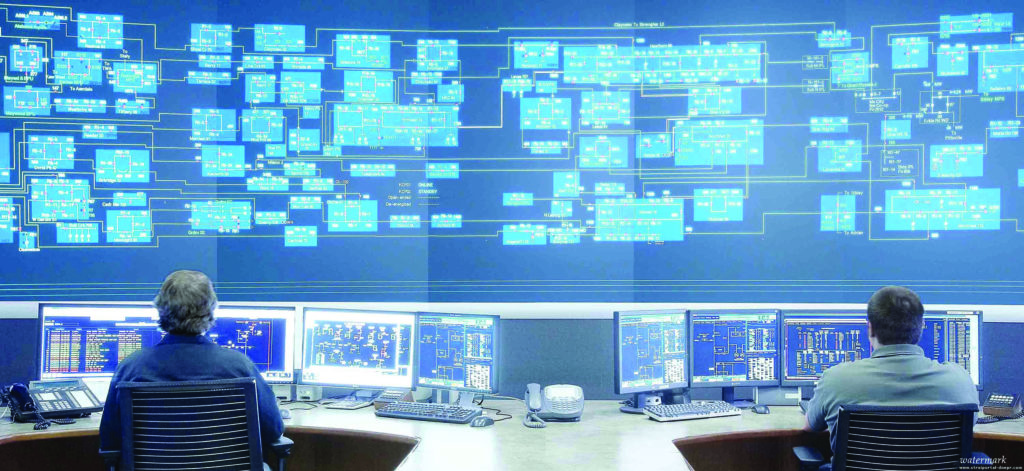
Source: electrocentr.info
Superconducting magnetic energy storage (SMES) has already found some practical use. Especially in the context of mobile energy storage units with relatively small (up to 106 J) capacity. SMES systems can find a wide use after development and creation of high-temperature superconductors on their basis. Their practical use is expected for 2025.
Federal unitary enterprise, RF state scientific center Troitskii Institute of Innovative and Thermonuclear Research has suggested and tested a new type of superconducting winding known as “compact torus” [9,10].
Traditional winding supported by external bandage is inevitably deformed under the effect of ponderomotive force. Such a deformation is accompanied by thermal disturbances causing the winding to change to normal state under currents that are considerably lower than critical currents (degradation in the laminar structure where each turn is glued to a rigid bandaging plate). The deformation is reduced depending on rigidity of the plate and is elastic. Disturbances do not arise. There is no degradation in the laminar winding. Structural plates are used as cold conductors. The energy is stored inside the torus with a constant density.
There is no field out of the winding. Homogeneity of the energy density is provided by the distribution of the winding within the torus volume.
In traditional windings, the stressed state of wire and the bearing structure grows along with the increase in winding size. Consequently, the amplitude of mechanical-thermal disturbances becomes higher. The amplitude is unpredictable.
Therefore simulation of windings does not yield reliable results.
To avoid overheating of wire under the effect of disturbances, good heat sinking is required.
There are no disturbances in laminar windings, so they do not require large heat sinking capacity and indirect cooling can be applied.
In laminar windings the conditions of wire operation are only dependent on the field used and are independent on winding size. This makes it possible to apply to any size of windings the results obtained through modelling. Advantages of laminar windings are checked multiple times with various superconducting magnets.
The new technological model provides the Russian power industry with a unique opportunity to improve its effectiveness dramatically andto support competitiveness of power-intensive industry
Compact torus is the most advantageous form of energy storages with closed flow.
Compact torus is unrivaled thanks to homogeneous density of the energy stored in the inner volume.
Unit cost of toroidal winding SMES with an energy capacity of 10 GW·h is $300/kWh, which is more cost-effective than PSHPP.
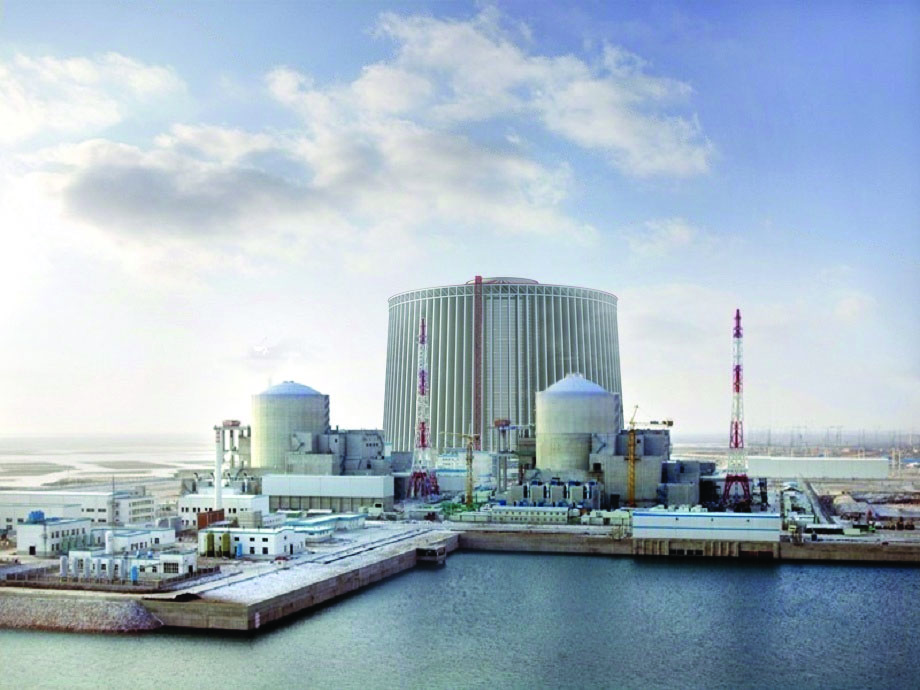
Source: E.Yu. Klimenko
Alumo-Hydrogen Energy
A prospective fuel of the future is hydrogen. Hydrogen, as well as Aluminium, can be delivered to the place of consumption and converted to useful electric and thermal energy.
Hydrogen can be produced through direct electrolysis of water by electric current. So, the problem of energy storage can be resolved in this way. This energy storage arrangement can be used to regulate performance of power plants of traditional type and those based on RES due to higher flexibility of water electrolyser as compared to Aluminium electrolyser that requires buffer storage because of its high sensitivity to changes in operation modes. However, there are serious restrictions for transportation of hydrogen in cylinders because of fire and explosion hazard. There is an option of cryogenic hydrogen storage, but it is not completely safe as well and connected with expenses for gas liquefaction and further losses during transportation because of evaporation.
Quite common is the method of storing hydrogen in hydrides of intermetallic and metal-hydride compounds, however its significant drawback is low hydrogen capacity of these compounds (1-3%), high cost and low number of hydrogenation/dehydrogenation cycles.
Aluminium is very close to hydrogen (which is considered as a prospective fuel today) in terms of energy potential. At the same time Aluminium is free from drawbacks inherent to Hydrogen (extremely low density of the gas and explosiveness). Storage and transportation of hydrogen arises a lot of issues related to safety. Also, there is no so far simple and inexpensive method to produce hydrogen in massive amounts from renewable resources.
Aluminium is the first widespread metal in nature and the third, after oxygen and silicon, common chemical element. In normal conditions Aluminium is chemically inert. And products of its oxidation can be reused to recover metal, so there is no need for considerable extension of aluminum-containing minerals mining.
Joint Institute for High Temperatures of the Russian Academy of Sciences (JIHT RAS, Moscow) developed a series of air-aluminium fuel cells.

Source: laptrinhx.com
Thus, Aluminium can participate in the distribution of environment-friendly (as compared to fossil fuels) energy from renewable sources and NPPs and in regulating their generating capacity. In this case the produced oxides are returned to the Aluminium plant for recovery.
Traditional option of the use of diesel fuel, besides its environmental impact, has a “power industry” disadvantage, i.e. the density of stored energy is less than that in the case of Aluminium. In addition, Aluminium, as opposed to Hydrogen and diesel fuel, is more convenient for transportation (not flammable, not fluidal, does not volatilize).
The alumo-hydrogen power industry technologies being developed can be applied in both the “hydrogen economy” of future as an effective and safe method of hydrogen and stored energy transportation, and as a supplement to existing power systems in regions without centralised gas network or local types of fuel. The use of Aluminium to generate hydrogen and energy allows reducing the environmental burden. The effectiveness of plants like this is determined to a significant extent by the cost of raw materials and by-products of the reaction, as well as by presence or absence of competitive solutions for centralized power supply to consumers.
Creating a center to test and certify energy storage units
Testing of electric energy storage units is the only method to receive information on units’ rated parameters and behavior in various possible non-standardized conditions of operation, operating cycles, that can not be performed on the basis of in-house resources of equipment manufacturers, especially in case of high capacities. These operating modes include short circuits, sudden breaks, disconnections of inductive consumers, non-linear sources and receivers of electric energy, four-quadrant (recuperative), leading/lagging loads, unbalanced loads/generators, generators with variable frequency and frequency change rate. Energy storage systems are electrical engineering assemblies of interconnected elements with significantly divergent control time constants. For example, characteristic times for accumulating element are minutes and hours, while for converter these time constants are up to several milliseconds, and for measurement and monitoring tools the characteristic time constants are equal to several periods of grid voltage or up to several seconds. All these elements have identical parameters for elements of the same type or parameters varying as a function of time that are defined by duration of operation, temperature behavior. Under the effect of extreme factors, such as short circuits, overloads, the degree of equipment operation reliability and adequacy of overload capacity margin can be detected. Also, it is possible to use special loads in the form of non-linear consumers or consumers with leading current. Quality of control system performance, local control algorithms of power equipment and general behavior of the entire system can be verified. For example, the study can cover transient processes, presence of static error for pre-defined command signals, both variable and constant, presence of dynamic errors and the degree of reaction to them, overshooting, excessive variations, presence of non-linear effects, exceedance of allowable performance parameters of energy storage units. System will be subject to: research, type, acceptance, check, periodic tests:
The center is created to improve functioning reliability and safety parameters of electric power sector facilities by means of comprehensive quality improvement of the applied energy storage systems and implementation of new technologies at companies of the Russian fuel and power industry.
- provision IT-system manufacturers with services to conduct comprehensive tests and quality control of products for conformity with requirements of applicable regulatory documents (qualification, certification);
- testing energy storage systems for conformity with electromagnetic compatibility requirements;
- conducting special tests to determine limits of allowable values of system parameters;
- conducting tests for fault tolerance in case of significant deviations of parameters;
- conducting tests with inadmissible values of commands, errors in the information support and change in topology of the power system and control system due to internal breaks and short-circuits, including errors in the information support in the form of deadlocks and other problems with computer.
Potential users of center’s services are:
- manufacturers and suppliers of products applied at companies of the electric power sector, system integrators, designer organizations;
- operating organizations of electric power sector players;
- developers and integrators of solutions using energy storage systems;
- participants of coordination of appropriate scientific-research and development activities in the field of center’s activity.
Localizing manufacture of energy storage units in Russia
Some manufacturers offer complete solutions of power plants with energy storage units in a wide range of capacity and power based on Lithium-ion batteries.
The use of backbone-modular principle to create energy storage units and electric energy converters with large capacity and high voltage based on Lithium-ion batteries currently is most advanced and widespread solution for fixed and transport applications.
The first in China high-capacity 100-MW energy storage system was manufactured in 2018 by Zhongtian Yipin Technology, a company of ZTT Group.
The system installed at Danjiang Dagang substation in the city of Zhènjiāng is composed of two types of block-containers: 1 MW / 2 MW h (system block-containers / battery block-containers).
The energy storage system by ZTT (battery modules) uses Lithium-ion Iron Phosphate cells (accumulators) of ZTT27173200 type with a voltage of 3.2 V and a capacity of 86 A/h. Energy capacity of one energy storage group is up to 2.7 MW h.
In recent years ZTT Group was permanently increasing its investments in the field of energy storage, and thanks to continuous research activities, developments and innovations the Group has developed a series of new products to meet the market demand.

Price indicator of cost of energy storage systems in container with a power of 1 MW/capacity of 1 MW h is 100 mln rub taking into account deliveries, erection and commissioning activities.
Currently ZTT Rus is looking for partner to localize manufacture of container-type and block-modular type energy storage units in Russia.
ZTT Rus plans to supply commercially produced PCS-converters (subsystem of energy conversion) and battery racks with battery modules (subsystem of energy storage), including DC distribution cabinets, from China, while other subsystems will be manufactured in Russia.
Installed power of the energy storage system built in San Diego is 30 MW, and its capacity is 120 MW h. The system is composed of 24 containers accommodating 400 thousand Lithium-ion batteries (Samsung SDI) assembled into 20 thousand modules.
Conclusion
Electric power sector is a typical example of holistic system having all its parts (generation, grid, loads) structurally and functionally interconnected to form an integrated system.
The main goal of energy storage units is no mere provision of power supply during interruptions of external powering, but formation of a new power sector infrastructure, which is free from restrictions of continuity of one type of electric processes, and in fact – considerable extension of type and form of power pools allowing integration of stand-alone, distributed and centralized systems, including new centers of generation and consumption, into a common power “system of systems”.
According to experts, in the nearest 10 years the market of energy storage systems will grow at average annual rates exceeding 30 % with a trend to lower unit cost of the stored energy.
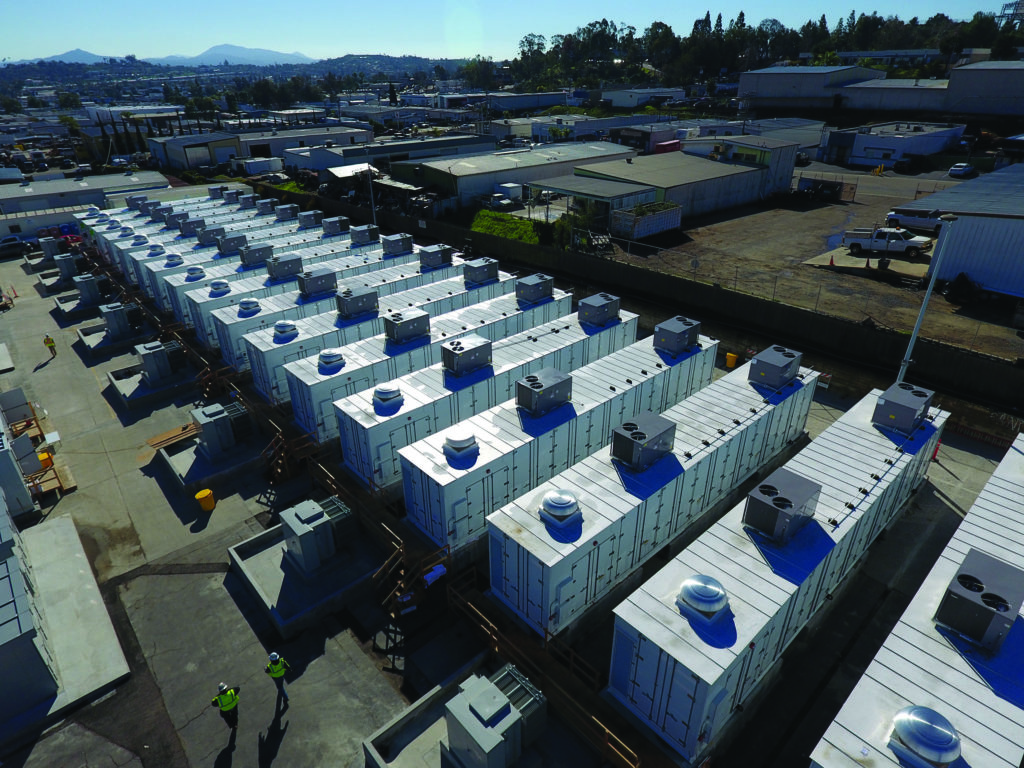
References:
- D.A. But, B.L. Aliyevsky, S.R. Mizyurin, P.V. Vasyukevich, Energy Storage Units. M.: Energoatomizdat, 1991, 400 p.
- Experimental determining of mode characteristics of power pools and intersystem power transmissions in case of parallel operation of the United Power System of Siberia and Kazakhstan as part of the Unified Energy System of the USSR / V.F. Timchenko, A.A. Khachaturov, N.L. Novikov, V.A. Kiladze, Yu.I. Paramonov, V.I. Reshetov, V.V. Bushuev, M.I. Kobytev, Yu.P. Shcheglov // Increasing Reliability of Power System Pools in the Northern Kazakhstan. Alma-Ata, 1977. p. 94–107.
- Automatic Frequency and Active Power Control in Power Systems // Energy Sector Abroad, 1967. 70 p.
- V.V. Bushuev, N.N. Lizalek, N.L. Novikov. Dynamic Properties of Power Pools. M.: Energoatomizdat, 1995, 320 p.
- N. G. Hingorani and L. Gyugyi. Understanding FACTS concepts and technology of flexible AC transmission systems. IEEE Press, New York, 2000.
- URL: http://energystorageexchange.org/projects
- Joint EASE/EERA Recommendation for a European Energy Storage Technology Development Roadmap Towards 2030, Final Report, March 2013.
- O.S. Popel, A.B. Tarasenko. Electric Energy Storage Units // Energoexpert. 2011, No. 3. P. 28–37.
- G.F. Kovalyov, Wind-hydro-power system with hydraulic energy storage of gravity type as a source of reliable electric power supply. International Scientific Workshop named after Yu.N. Rudenko. Irkutsk, 2015. P. 146–155.
- E.Yu. Klimenko, A.M. Malofeyev, S.I. Novikov, Superconducting magnets for MHD Ship Propulsion. In the Applied Superconductivity book, H.C.Freyhardt, Eds., DGM informationsgesellschaft veriag, 1993, volume 2, P. 953–955 (Proceedings of EUCAS Conference, October 1993, Göttingen, Germany).
- Patent RU(11) 2 370 923(13) C2, Toroidal Winding with Homogeneous Module of Magnetic Field / Ye.Yu. Klimenko (RU), Ye.P. Poluljakh (RU)
- Yingjie Tan, Kashem M. Muttaqi. Multilevel energy storage based frequency regulation in remote area power supply system’s 2016 IEEE International Conference on Power System Technology (POWERCON) Year: 2016 P. 1–6, DOI:10.1109 / POWERCON.2016.7754028
- Ziping Wu, Wenzhong Gao, Huaguang Zhang, Shijie Yan, Xiao Wang. Coordinated Control Strategy of Battery Energy Storage System and PMSG-WTG to Enhance System Frequency Regulation Capability. IEEE Transactions on Sustainable Energy. Year: 2017, Volume: PP, Issue: 99. P. 1, DOI: 10.1109 / TSTE.2017.2679716
- Analytical Methods for Characterizing Frequency Dynamics in Islanded Microgrids with Gensets and Energy Storage. Ajit A. Renjit, Abrez Mondal, Mahesh S. Illindala, Amrit S. Khalsa. IEEE Transactions on Industry Applications. Year: 2017, Volume: PP, Issue: 99. P. 1, DOI: 10.1109/TIA.2017.2657481
- Daniel-Ioan Stroe, Vaclav Knap, Maciej Swierczynski; AnaIrina Stroe; Remus Teodorescu Operation of a Grid-Connected Lithium-Ion Battery Energy Storage System for Primary Frequency Regulation: A Battery Lifetime Perspective. IEEE Transactions on Industry Applications. Year: 2017, Volume: 53, Issue: 1. P. 430–438, DOI: 10.1109/TIA.2016.2616319. IEEE Journals & Magazines.
- V.E. Fortov, E.E. Son, K.K. Denshchikov, A.Z. Zhuk, A.N. Novikov, N.L. Novikov, Hybrid electric energy storage unit for Unified Energy Storage System based on batteries and supercapacitors / Innovative engineering solutions in the R&D program of FGS UES PJSC, Collection of papers – M., 2016. P. 198–212.
- Alumo-Hydrogen Energy / A.E. Sheindlin, RAS Academician, Eds.. – M.: Joint Institute for High Temperatures of the Russian Academy of Sciences, 2007.
- URL: URL: http://digitalsubstation.com/blog/2017/02/27/ krupnejshijnak opitel-energii-otkryt-v-kalifornii/


